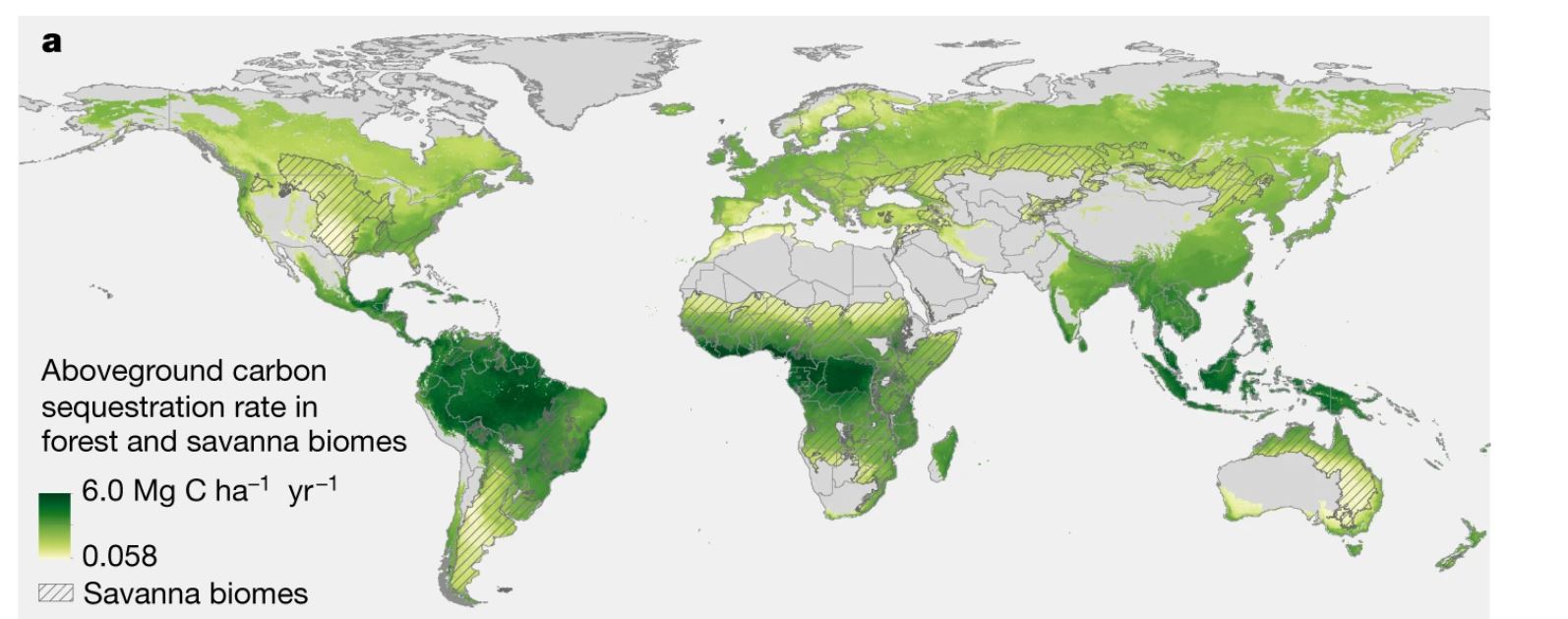A group of international researchers, among them Tom Crowther, Johan van den Hoogen, and Devin Routh from the D-USYS Crowtherlab have mapped potential aboveground carbon capture rates of global forest landscapes. By doing this, they are highlighting the unsung role of natural forest regrowth and refining previous international estimates.

Published in the journal Nature, the paper synthesizes results from 256 previous studies and contains more than 13,000 measurements from locations worldwide. The result is a first of its kind, 'wall-to-wall' global, 1km resolution map that highlights areas with the greatest carbon returns from the first 30 years of allowing lands to reforest naturally.
Led by scientists from The Nature Conservancy and published in collaboration with the World Resources Institute and 18 other research organizations, the study also highlights how potential carbon accumulation rates vary widely - up to 100-fold - based on factors like climate, soil and slope, providing a much-needed benchmark for assessing the potential of forest regrowth as a climate mitigation strategy, alongside essential actions like the decarbonization of fossil fuels and other industrial emissions.
Have average default regrowth rates have been underestimated so far?
The unprecedented rigour of these latest findings also suggest that average default forest regrowth rates used by the UN Intergovernmental Panel on Climate Change (IPCC) may have been underestimated by 32%. This suggests that natural forest regrowth is an even more powerful climate mitigation tool than previously realized.
To coincide with the publication of this study, Nature4Climate (N4C) - the coalition established by The Nature Conservancy with Conservation International, World Resources Institute and other partners to increase global investment and action on nature-based solutions - has published an updated country mapper highlighting areas of high potential globally.






